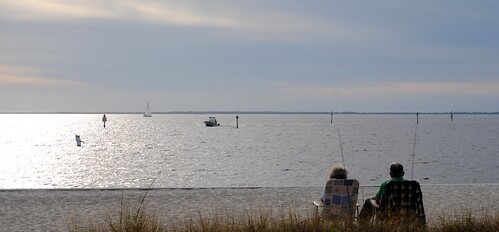Punta Gorda Passes Strong Urban Fertilizer Ordinance

Charlotte Harbor. Photo Credit: Steven Scott of the Greater Charlotte Harbor Sierra Club
This June, the City of Punta Gorda made Southwest Florida one step closer to complete protection from urban fertilizer run-off by passing, unanimously, a fertilizer management ordinance! Now the only community remaining without a sufficiently strong urban fertilizer ordinance in the Southwest Gulf region is Collier County.
Special thanks goes out to the Greater Charlotte Harbor Group for their support and help on this campaign by packing City Hall, helping to table at the Punta Gorda Farmer's Market, and attending meetings with City Council members and staff!
As you can see below from the map provided by the Conservancy of Southwest Florida, Punta Gorda was integral to more comprehensive protection from urban fertilizer run-off in our region.
If it makes your grass grow, it's going to make algae in the water grow — that is why these urban fertilizer ordinances are important! Nitrogen and phosphorous-rich substances like fertilizer, sewage and animal waste feed harmful algae and lead to the growth of toxic Red Tide and blue-green algae which have been plaguing local waterways and causing fish kills and respiratory illnesses in humans.
The backbone of a strong fertilizer ordinance includes a summer rainy season ban on nitrogen and phosphorus application. The Punta Gorda City Council voted unanimously for a fertilizer ordinance with a rainy season ban (June 1–Sept, 30). During the rainy season in Florida, fertilizer does not have an opportunity to be absorbed into the soil before our frequent rainstorms wash the fertilizer off lawns and into canals that lead to our local rivers, estuaries and bays.
Other best practices for landscaping in a "Florida Friendly" way are: a "zero phosphorous" rule, unless soil tests show that phosphorous is necessary; the use of 50% controlled-release nitrogen; a yearly application limit for nitrogen (4 lb/1000 ft2); and maintaining a 10-foot fertilizer-free zone from the waters' edge. We CAN reduce the fertilizer run-off that is fueling harmful algae blooms, like the present blue-green algae bloom suffocating Charlotte Harbor's Sunshine Lake.